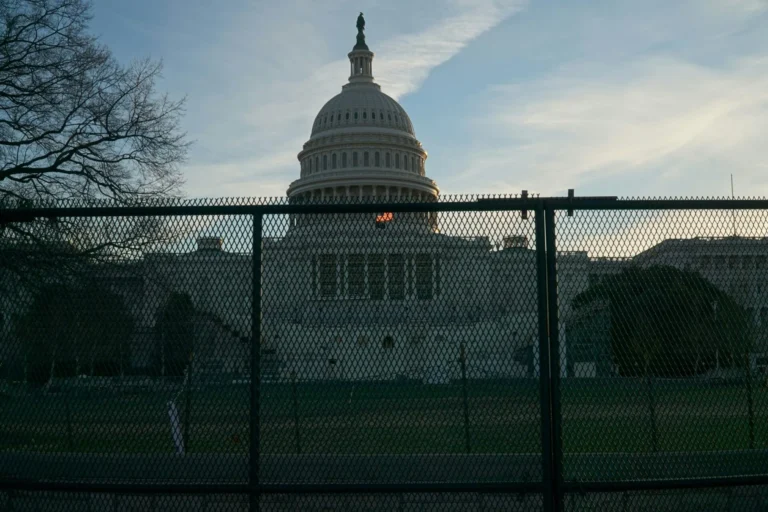One Congressionalreport dares to askwhat North Korea’snuclear bombmeans for the world.
Congressional Report Discusses North Korean Nuclear AmbitionsBy Cliff MontgomeryAn October 24th, 2006 Congressional Research Service (CRS) report discusses the “big question” on North Korea‘s recent successful test of a nuclear weapon: does the country plan to use it on either U.S. interests or other Asian countries? We quote from the report below:“On October 9, 2006, North Korea (formally the Democratic People’s Republic of Korea) announced it conducted a nuclear test. After several days of evaluation, U.S. authorities confirmed that the underground explosion was nuclear, but that the test produced a low yield of less than one kiloton.”The United States and neighboring countries immediately condemned the test and convened a United Nations Security Council (UNSC) meeting to coordinate an international response. North Korea remained defiant, insisting that any increased pressure on the regime would be regarded as an act of war.”China and South Korea, the top aid providers to and trade partners with the North, supported the resolution, but uncertainty remains as to whether the two countries will strictly enforce the sanctions and/or cut off other economic cooperation and aid considered crucial to the regime.”The sanction regime depends heavily on individual states’ compliance with the guidelines. Economists argue that the only definitively effective punishment on North Korea would be the suspension of energy aid from China, which reportedly supplies about 70% of North Korea’s fuel.”Determining the motivations of a government as opaque and secretive as North Korea is exceedingly difficult, but analysts have put forth a range of possibilities to explain why the Pyongyang regime decided to test a nuclear weapon. Possible motivations include an attempt to engage the United States in bilateral talks, to ensure the security of the regime, and to satisfy hard-line elements within the Pyongyang government, as well as technical motivations for carrying out a nuclear test.”The short-term implications of North Korea’s nuclear test are clear: whether a technical success or failure, North Korea’s willingness to carry out a test in the face of significant opposition indicates that it is willing to endure the potential consequences.”Analysts fear that the medium and long-term implications could include a more potent nuclear threat from Pyongyang, a nuclear arms race in Asia, and the transfer of nuclear weapons or material to states or groups hostile to the United States. There are also strong concerns about the impact on the global non-proliferation regime, particularly to other states poised to develop their own nuclear weapon programs.”The most fundamental U.S. goals of the confrontation with North Korea are to prevent the proliferation of weapons of mass destruction and to prevent an attack–either nuclear or conventional–on the United States or on its allies in the region.”The options available to U.S. policymakers to pursue these goals include the acceptance of North Korea as a nuclear power, bilateral or multilateral negotiations, heightened legal and economic pressure on North Korea, adoption of a regime change policy through non-military means, military action or threats, and withdrawal from the conflict. […]”President Bush and other U.S. officials immediately condemned the action and called for a swift response from the United Nations Security Council (UNSC). At the U.N., the United States pushed for punitive sanctions and drafted the resolution that was eventually unanimously adopted.”In a hastily-arranged trip to the region, Secretary of State Rice reiterated the U.S. security commitment to South Korea and Japan and urged China and South Korea to implement key measures of the U.N. resolution. […]”North Korean officials reportedly told Russian officials the test of the explosive device would have a range of yield between 5 and 15 kilotons; another report suggests that North Korea told Chinese officials they planned to carry out a 4-kiloton test.”Seismic information available from the Korea Institute of Geoscience and Mineral Resources in South Korea indicates that an explosion equivalent to an earthquake measuring a 3.58 magnitude occurred at 10:35 a.m. on October 9 in the vicinity of Musudan-ri, North Hamgyong Province. Most experts have correlated the size of the seismic disturbance with a sub-kiloton explosion, raising doubts about the effectiveness of the North Korean nuclear weapons design.”On October 16, 2006, the U.S. Director of National Intelligence issued a statement confirming that a nuclear test was conducted, with a yield under 1 kiloton, in the vicinity of P’unggye.”Several experts have suggested that the nuclear test might have fallen short of the anticipated yield because of imprecise manufacturing. According to one account, U.S. intelligence estimates that the blast was in the range of 200 tons of TNT, or 0.2 kt. By comparison, a simple plutonium implosion device normally would produce a larger blast, perhaps 5 to 20 kilotons. The first nuclear tests conducted by other states have ranged from 9 kt (Pakistan) to 60 kt, but tests by the United States, China, Britain and Russia were in the 20 kt-range.”





